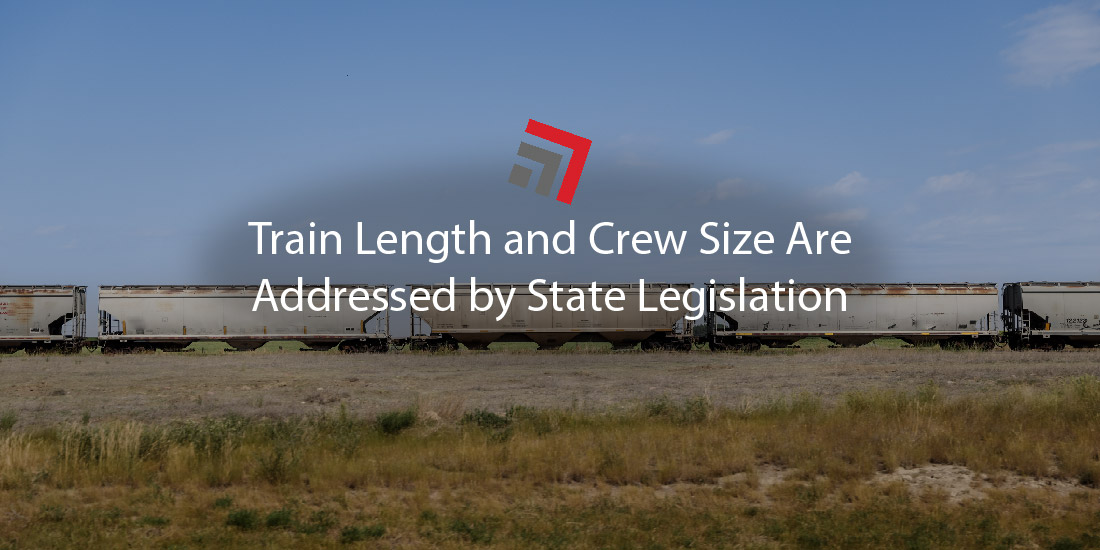The rail industry has more drama than a high school clique. The only difference between them is that one is a crucial mode to haul America’s freight.
And, while teenage truck drivers may become a thing, it’s pretty obvious which one we’re talking about.
Rail has many issues to answer to. Already lagging behind trucking in freight share, it’s been easier for more and more shippers to rule out this tormented mode of transport.
While responsibility falls on the railroads to clean up their act, other stakeholders can be productive stewards for helping the industry get on the right track.
The most powerful piston for change is the government. Whether at federal or state levels, legislators and agencies alike have the capability to propose and pass great change. Their acumen may be questionable at times, however regulators are essential when navigating such a large and flawed industry.
Safety is the subject of new rail legislation
Recently, the industry saw two examples of state-level legislation at work.
In Nevada, lawmakers introduced a bill limiting train lengths, while Ohio passed a new law requiring crew sizes of at least two people.
Safety is but one phylum in rail’s exhaustive list of challenges, however, it’s in immediate need to be addressed.
Nevada seeks to limit train length
Nevada’s proposal of Assembly Bill No. 456 seeks to prohibit trains more than 7,500 feet long on main lines.
Nevada defines “main lines” as railroad tracks that see 5 million gross tons or more transported annually. The proposed rule would also be enforced on any lines that branch off from a main line.
If passed, penalties would be enforced against railroads who violate the rule. Fines of up to $5,000 for the first violation, $10,000 for the second violation, and $25,000 for the third violation could be thrown at any rulebreakers.
Union Pacific (UP) and BNSF, the two Class I railroads that operate in Nevada, contest train length is safely increased by placing locomotives in the middle of the train instead of just the front.
They, along with railroad interest groups, have defended longer train sizes as bringers of improved fuel efficiency and reduced emissions.
UP told FreightWaves, “Operating trains with more rail cars results in fewer trains on the network…improves operating practices and network fluidity.”
Additionally, railroads claim less trains on the tracks means less chances for crossing collisions, derailments, and employee injuries.
On the flip side, unions say longer trains require more time for a crew member to inspect potential problem areas of the train given the greater distance between their cab and other rail cars. They’ve also floated the question of how longer trains may be more susceptible to derailments due to the physical forces added.
Two-person crews become the law in Ohio
Meanwhile, Ohio’s governor has made two-person train crews the law of the land. A provision that’s part of a wider $13.5 billion transport budget bill, the requirement mirrors the Federal Railroad Administration’s proposal back in July 2022.
Arguably prompting this was February’s Norfolk Southern train derailment in East Palestine, Ohio. The highly publicized accident was one of the worst environmental disasters to date.
Many stakeholders see this disaster as the breaking point for rolling out safety provisions and better regulate the industry to prevent similar events.
Proponents argue two-person train crews will allow quicker response times to unplanned situations or emergencies. One crew member can monitor the unpredictable, while the other carries out regular operations.
The bill takes effect on July 1.
Final Thoughts
In addition to crew size, Ohio’s transport bill also requires wayside defect detectors to be installed every 10 to 15 miles along main track line in Ohio. This provision will make Ohio the first and only state with requirements for wayside detectors.
Please contact us if you have any questions regarding this topic or any others in domestic logistics. In addition, stay up to date with weekly headlines from both trucking and rail via our Road Map newsletter.



Recent Comments